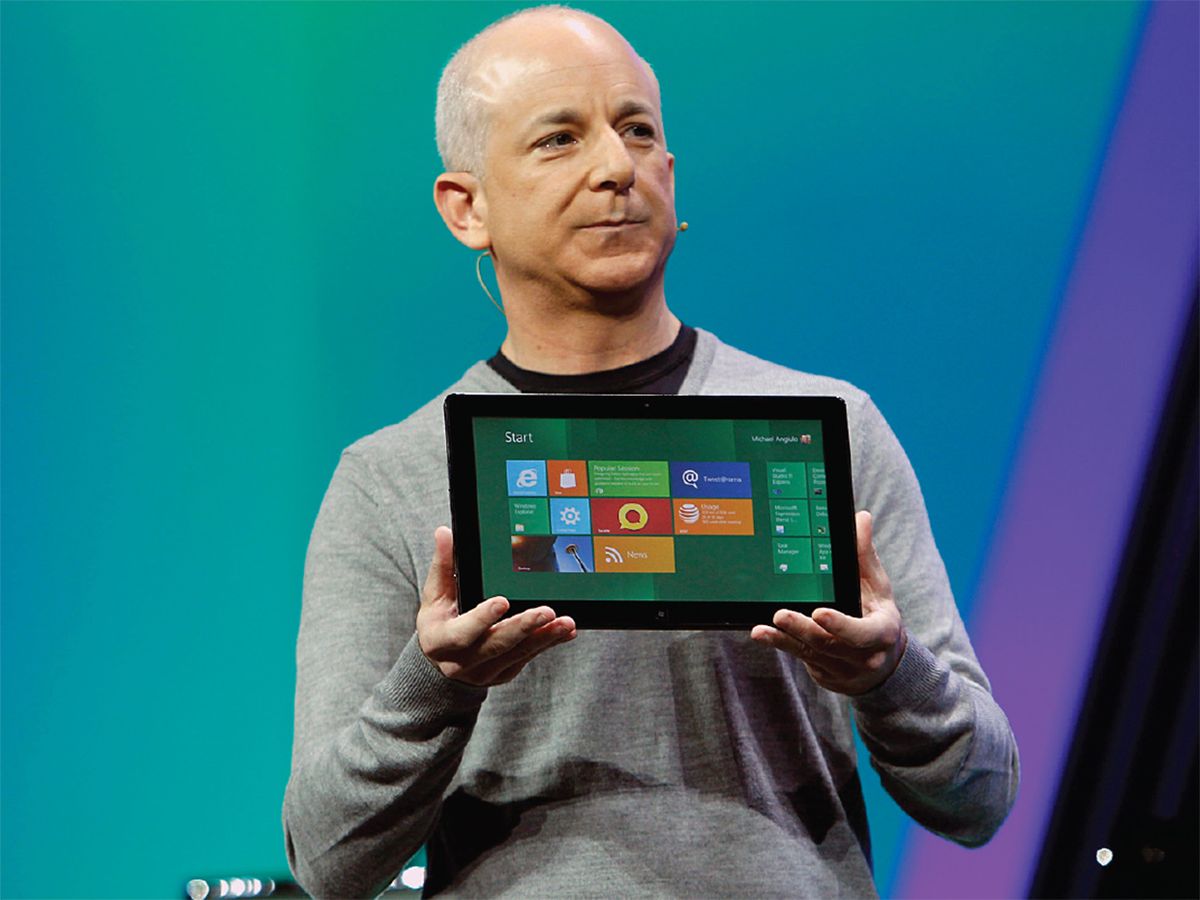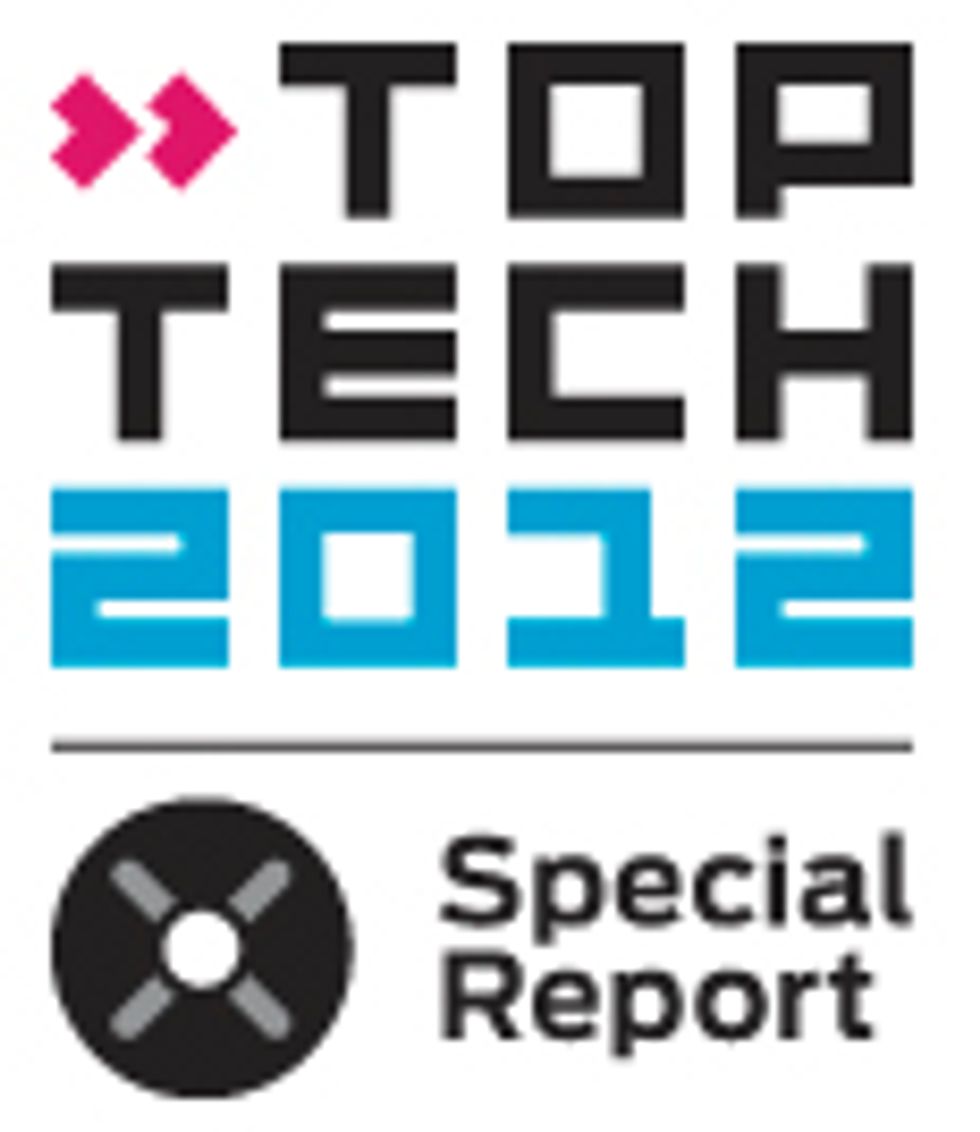Windows 8: A Redo From Redmond
The 2012 release of Windows 8 will show whether Microsoft can surf the tablet tidal wave

The first time Microsoft was caught off guard, Bill Gates managed to turn things around by sending the entire company his famous e-mail, “The Internet Tidal Wave.” The current challenge—the drift away from PCs in favor of mobile devices—may well be greater.
The move began in 2007, with the introduction of Apple’s iPhone, and it was kicked into high gear with the advent of the iPad in 2010 and an Android equivalent in 2011. Suddenly, Microsoft’s business was based on yesterday’s platforms.
“Their products are fine on notebooks. But on phones and tablets, they’re in bad shape,” says Michael Silver, an analyst at Gartner, a technology research firm.
Yesterday’s platforms are coming to be represented by an ever-narrowing slice of the computing pie. Last year people bought twice as many smartphones as notebooks, and tablets are also set to exceed notebooks by 2016, according to Gartner. Microsoft’s quick solution to its mobile-computing problem was Windows Phone 7, but in the third quarter of 2012 the company is expected to launch its more considered answer: Windows 8. The future of the company may depend on it.
“Windows 8 has to be really good,” says Michael Cherry, lead analyst for operating systems at Directions on Microsoft, in Kirkland, Wash. (and no relation to the author). “They can’t have another Vista,” the ill-regarded system that preceded Windows 7. “Especially when you’re late to market, you have to leapfrog,” he says.
The early indications—which mainly come from a prebeta version of the software that Microsoft handed out at its Build conference, in September—are mixed.
“They have a lot of work ahead of them,” Cherry says. “The version they gave out at Build is good for developers, to give them some idea of the changes, to test programs, and so on. But performance is very slow. And they only had code for Intel processors, not ARM.” That last point may be critical: Today’s smartphones and tablets all use ARM-based microprocessors.
Microsoft’s hardest task might be the interface, says Cherry. “It’s going to have to do what no operating system has yet done: seamlessly bridge the divide between smartphones and PCs.”
James Ashley, a design architect at the Web-development firm Razorfish, in Seattle, thinks Microsoft may have met the challenge. Indeed, he says he was “blown away” by what he saw of Windows 8 at Build. There, Microsoft showed a tablet in a docking station that also had an external desktop monitor. The user can touch the tablet’s screen or use a keyboard and mouse to work the external screen.
“They have what looks like two different operating systems side by side. And the part that took everybody by surprise was that you’re switching back and forth between [them] casually,” says Ashley. That kind of integration of the mobile and desktop experiences might be just the leapfrogging jump that Microsoft needs.
“A lot of people want to use a tablet in the office now,” he says. “What Microsoft has done is push the story a little bit further—we can use a tablet with a docking station and a big screen, so we can have a traditional desktop experience, but at the same time we can just pull the tab let out and take it to a meeting, or home.”
The greater threat to Microsoft might be Amazon. Its inexpensive Android-based Kindle Fire, and the ecosystem of movies, books, music, apps, browsing, and shopping that surrounds it, may tempt an unexpectedly large number of consumers away from the PC entirely. Says Cherry, “What if people say, ‘Gee, instead of a new laptop, we’ll get three Kindles and everyone can have one’? That might be something that no amount of PC-tablet-smartphone integration can overcome.”
This article originally appeared in print as “A Redo from Redmond?”



